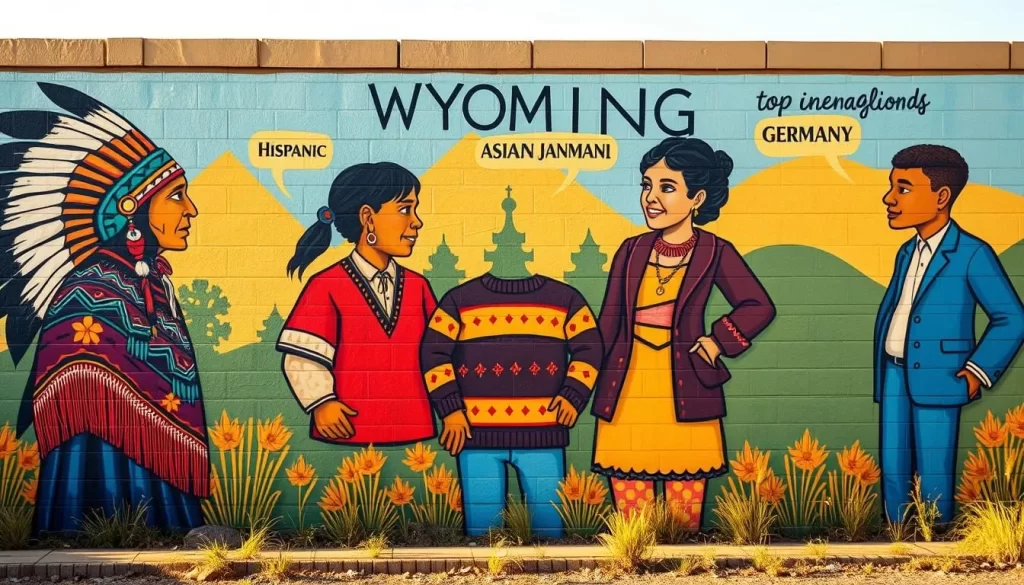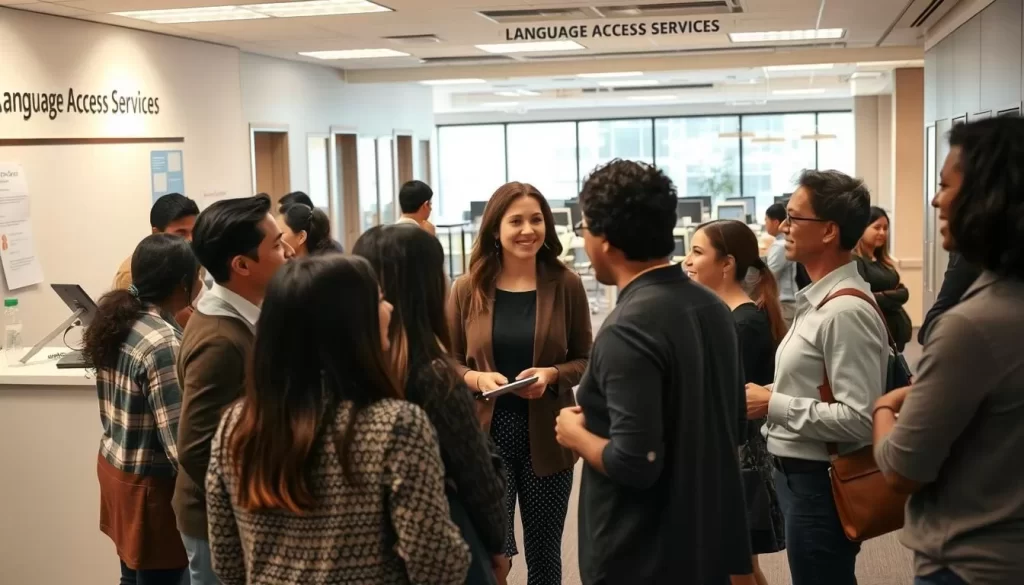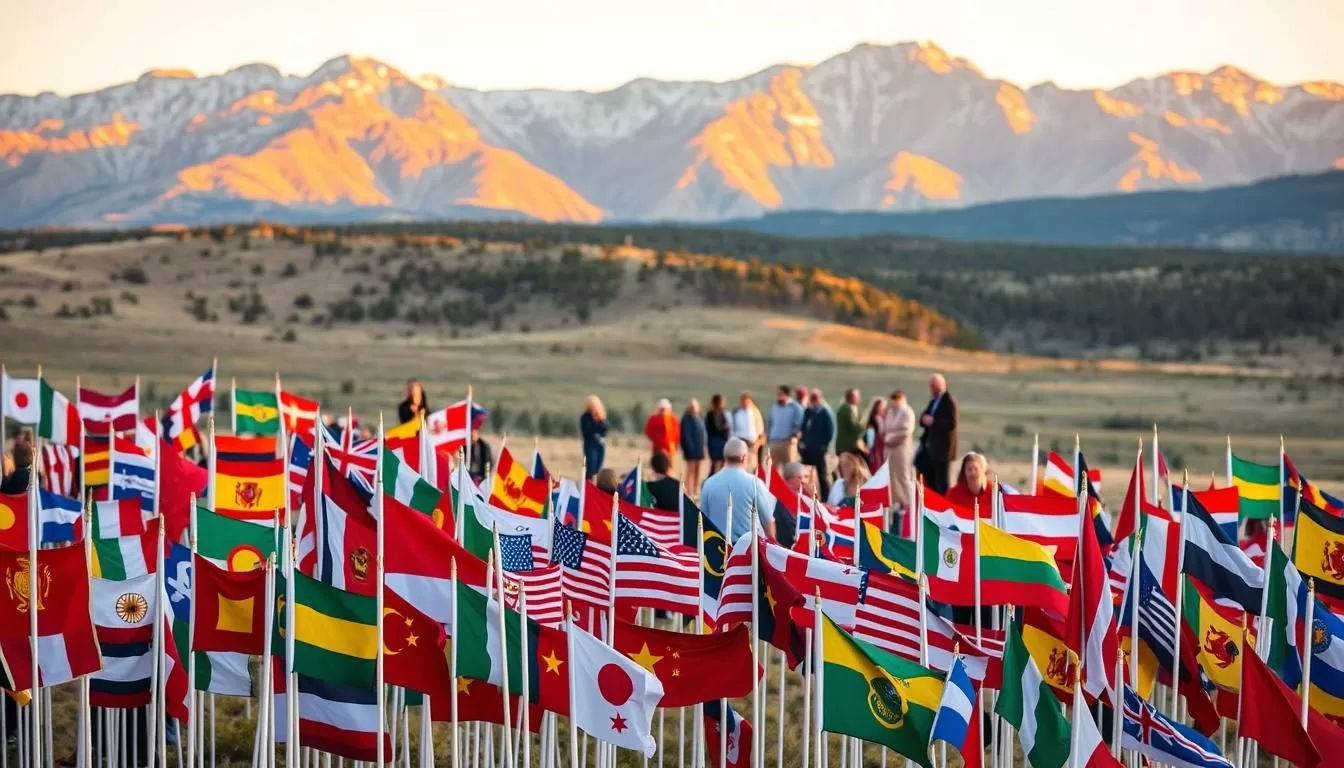✓ Accommodations✓ Flights✓ Rental Cars
You might be surprised to learn that Wyoming, one of the least populated states in the US, boasts a rich linguistic landscape. With a population of approximately 581,381 residents, the state’s language profile is more complex than you might expect.
While English is the official language, around 6.8 percent of residents aged five and older speak a different language at home. This diversity is attributed to the presence of immigrants and indigenous tribes, contributing to the state’s cultural diversity.
As you explore the languages spoken in Wyoming, you’ll uncover a fascinating tapestry of communication that reflects the state’s history and changing demographics. From the most common non-English languages to those spoken by smaller communities, the linguistic landscape is more nuanced than you might initially think.
The Linguistic Landscape of Wyoming
As you explore the linguistic landscape of Wyoming, you’ll discover a diverse tapestry of languages spoken across the state. Wyoming, with its estimated 581,381 residents, presents a unique case for language demographics.
English as the Official State Language
English is the predominant language in Wyoming, spoken by the majority of its residents. As the official state language, it is used in most official contexts, education, and daily life. Approximately 93.2% of the population speaks English at home, making it the most widely spoken language.
Wyoming’s Immigration History and Language Diversity
Wyoming’s immigration history has contributed to its language diversity. The state’s population includes people from various ethnic backgrounds, bringing with them their languages and cultural practices. This diversity is reflected in the languages spoken at home by residents. For instance, census data shows that around 6.8% of the population (approximately 39,534 residents) speaks a language other than English at home.

Language Demographics Overview
The language demographics in Wyoming reveal interesting trends. Spanish is the most common non-English language, followed by German, Native American languages, Chinese, and French. The distribution of language speakers varies across the state, often reflecting historical settlement patterns or economic opportunities. Understanding these demographics is crucial for providing services and resources in the appropriate languages.
- Census data highlights that about 39,534 residents speak a non-English language at home.
- The Limited English Proficiency (LEP) population, around 1.94% of the state’s residents, has varying levels of English comprehension.
- Language access and services are essential for LEP individuals, including translation and interpretation services.
Top 5 Most Common Languages in Wyoming Besides English
Beyond English, Wyoming is home to a variety of languages spoken by its population. This linguistic diversity is a reflection of the state’s history, cultural influences, and demographic changes over time.
Spanish: Wyoming’s Most Widely Spoken Non-English Language
Spanish is the most widely spoken language in Wyoming after English, reflecting the significant Hispanic and Latino population in the state. With a growing number of Spanish speakers, Wyoming’s cultural landscape is becoming increasingly diverse. You can see this diversity in various aspects of life, from local businesses to community events.
The presence of Spanish speakers is not limited to urban areas; it’s also evident in rural parts of the state, contributing to the rich cultural tapestry of Wyoming.
German: Historical Influence and Current Speakers
German has a historical significance in Wyoming, with many German immigrants settling in the state. Although the number of native German speakers has decreased over time, the language still maintains a presence due to cultural and familial ties.
Today, you can still find communities and events celebrating German heritage, showcasing the lasting impact of German influence in Wyoming.
Native American Languages: Preserving Indigenous Heritage
Native American languages are an essential part of Wyoming’s linguistic heritage, representing the diverse indigenous communities within the state. Efforts to preserve these languages are underway, including language documentation and cultural programs.
These initiatives not only help in preserving the languages but also in educating the public about the rich cultural history of Native American communities in Wyoming.
Chinese (Mandarin and Cantonese): Growing Asian Influence
The presence of Chinese languages, including Mandarin and Cantonese, reflects Wyoming’s growing connections with Asia. This linguistic diversity is a result of increased cultural exchange and immigration.
You can observe the impact of Chinese culture in various aspects of Wyoming’s society, from cuisine to cultural events, enriching the state’s multicultural identity.
French: European Heritage in the Cowboy State
French rounds out the top five non-English languages in Wyoming, with approximately 1,072 speakers representing nearly 0.20% of the state’s population. The French language presence connects to both historical French exploration and recent immigration.
Here’s a summary of the top 5 languages and their estimated number of speakers:
| Language | Estimated Speakers | Percentage of Population |
|---|---|---|
| Spanish | Significantly higher than other languages | Substantial percentage |
| German | Several thousand | A few percent |
| Native American Languages | Few thousand | About 1% |
| Chinese (Mandarin and Cantonese) | Over 1,000 | Nearly 0.2% |
| French | 1,072 | 0.20% |

Understanding the linguistic diversity of Wyoming provides insights into the state’s cultural richness and the complex identity of its population. As the demographics continue to evolve, so too will the languages spoken across the state.
Wyoming, United States: Official and Widely Spoken Languages Beyond the Top 5
Beyond the top five languages, Wyoming’s linguistic diversity expands to include several other languages spoken by its residents. You might be surprised by the variety of languages that contribute to the state’s cultural richness.
Russian: A Small but Significant Community
Russian is among the languages spoken in Wyoming, reflecting the state’s diverse cultural heritage. With a small but significant community, Russian speakers contribute to the state’s linguistic landscape. You can find Russian influences in certain cultural events and communities.
Japanese: Cultural and Economic Connections
Japanese is another language that has a presence in Wyoming, driven by cultural and economic connections. The state’s international ties are strengthened by the presence of Japanese speakers, who participate in various cultural and business activities.
Tagalog and Filipino: The Philippine Connection
Tagalog, spoken by people of Filipino descent, is also represented in Wyoming. The Philippine connection adds to the state’s linguistic diversity, with Tagalog speakers contributing to the cultural fabric. You can experience this diversity through cultural events and community gatherings.

Austronesian Languages: Pacific Island Heritage
Austronesian languages, including those from Pacific Island cultures, are part of Wyoming’s linguistic mosaic. These languages enrich the state’s cultural heritage, reflecting the diversity of its residents. You might discover unique cultural practices and traditions associated with these languages.
Korean: Wyoming’s Tenth Most Common Non-English Language
Korean is the tenth most widely used non-English language in Wyoming, with approximately 357 speakers making up almost 0.07% of the population. The Korean-speaking community includes immigrants, their descendants, and temporary residents connected to education, business, or military service. You can find Korean cultural influences in certain Wyoming communities through restaurants, churches, and cultural organizations. While small in number, the Korean-speaking population contributes to Wyoming’s international connections and creates demand for specific translation and interpretation services. Understanding the presence of Korean speakers helps you appreciate how global migration patterns reach even sparsely populated states like Wyoming, creating unexpected pockets of linguistic diversity.
- The Korean-speaking community in Wyoming is diverse, comprising both permanent residents and temporary visitors.
- Korean cultural influences are visible in various aspects of community life, including cuisine and cultural events.
- The presence of Korean speakers, along with other language communities, highlights Wyoming’s role in global cultural exchange.
Language Access and Services in Wyoming
Ensuring language access is crucial for Wyoming’s diverse population. As the state’s demographic landscape continues to evolve, the need for effective language services has become increasingly important.
Limited English Proficiency (LEP) Population
Wyoming is home to a growing number of individuals with Limited English Proficiency (LEP). These individuals may face challenges in accessing essential services due to language barriers. According to data, a significant portion of Wyoming’s population requires language assistance to navigate everyday tasks and access public services.
Translation and Interpretation Services
To address the needs of LEP individuals, Wyoming offers a range of translation and interpretation services. Professional language services providers, like Acutrans, play a vital role in delivering accurate and timely language solutions. These services are crucial in ensuring that LEP individuals can access healthcare, education, and government services without facing language-related obstacles.
- Government agencies provide language access services as required by federal law.
- Educational institutions offer English as a Second Language (ESL) classes and other language support services.
- Community-based organizations fill gaps in official language services, providing informal translation assistance and cultural navigation support.
Language Resources for Wyoming Residents
Wyoming residents with LEP can access various language resources. These include:

Technology has also expanded language access options, with translation apps, multilingual websites, and remote interpretation services making it easier to bridge language gaps. For those seeking professional language services, providers like Acutrans offer skilled translators and interpreters. Additionally, government agencies and community organizations provide valuable resources and support.
Conclusion: Wyoming’s Evolving Linguistic Diversity
As we’ve explored, Wyoming’s language demographics reveal a rich tapestry of languages spoken across the state. With English as the official state language, it’s spoken by the majority, yet approximately 6.8% of residents aged five and older speak a language other than English at home.
The presence of multiple language communities enriches Wyoming’s cultural fabric, connecting it to global populations. Census data highlights the diversity, with Spanish being the most widely spoken non-English language. Understanding this linguistic diversity is crucial for businesses, government agencies, and healthcare providers to serve all residents effectively.
As Wyoming’s population continues to evolve, language access services will remain vital to ensure that limited English proficiency residents can fully participate in their communities. By recognizing and supporting multiple language communities, Wyoming can build more inclusive institutions that serve the needs of all residents.
The above is subject to change.
Check back often to TRAVEL.COM for the latest travel tips and deals.




